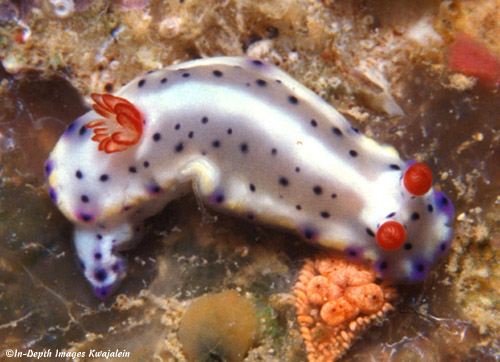
This rarely found nudibranch has some characteristics of Hypselodoris infucata, but I think it is different. The coloration is much lighter than H. infucata specimens I have found in Hawaii and Indonesia, and the radular teeth differ as well, having fewer rows of teeth (52-56) and fewer teeth per half-row (55-56), and distinct denticulation on most of the lateral teeth. Denticles start up around tooth 7, while typical H. infucata have denticles only on the outermost teeth. Only four specimens have been seen in the Marshalls, all at Enewetak Atoll, and all four appear in the photos below. They live under dead coral or aluminum storm debris on lagoon interisland reefs at depths of 5 to 8 meters. Specimens observed ranged from 15 to 19mm in length. Gosliner et al (2018) figure one of these specimens as Hypselodoris sp. 3. Hypselodoris sp. e072 was first reported in the Marshalls from Enewetak Atoll as Hypselodoris infucata by Johnson & Boucher (1984).

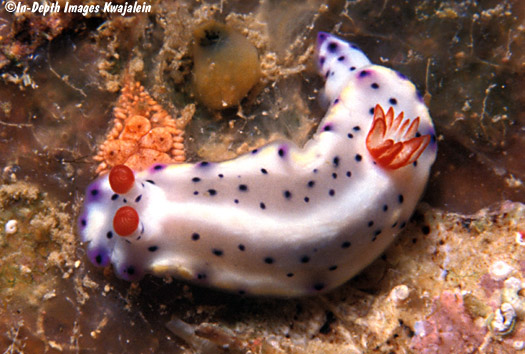
Some have yellow patches dorsally in addition to the dark purple-black spots.
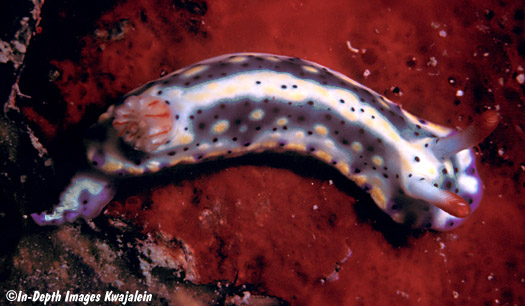
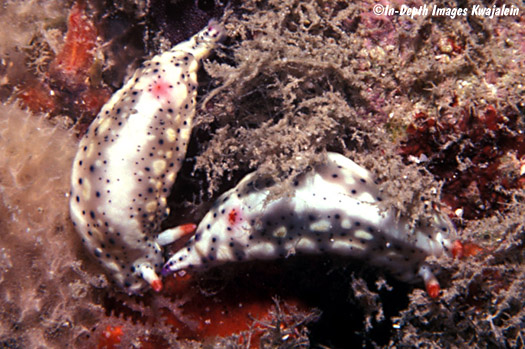
Selected radular teeth from a 15mm specimen.
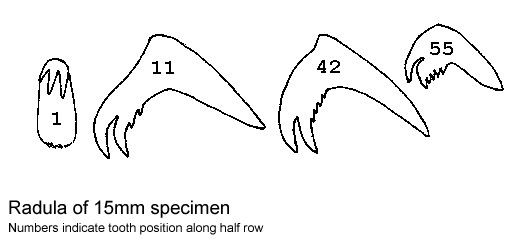
For comparison, a specimen of Hypselodoris infucata from Hawaii is pictured below feeding on its prey sponge, Dysidea fragilis.
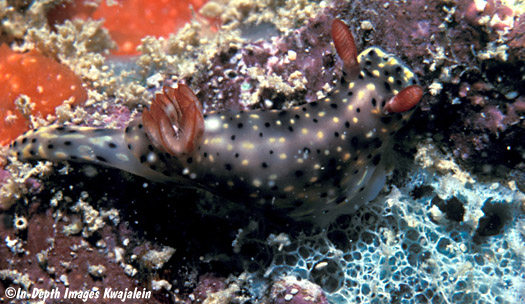
Created 2 January 2005
Updated 15 November 2021